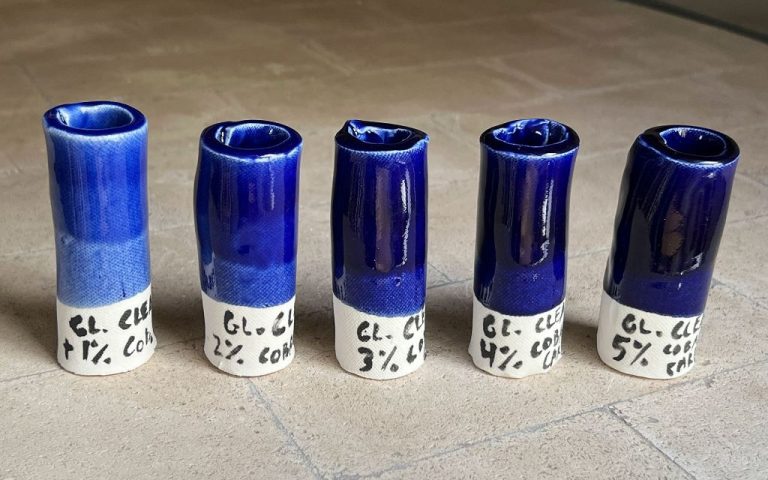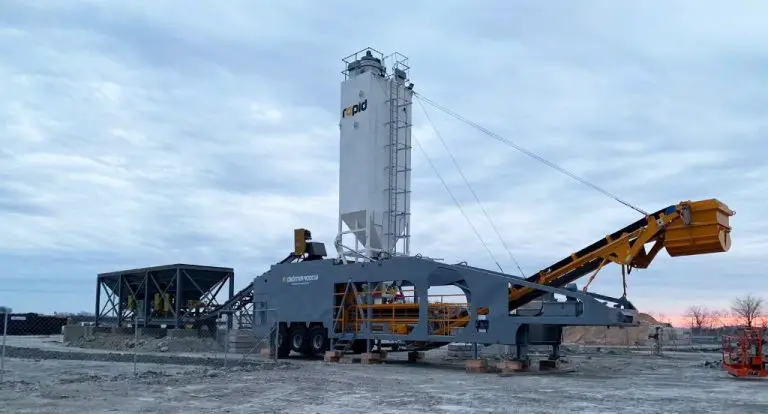What Chemical Loosens Clay Soil?
Clay soil is characterized by its tiny particles and propensity to compact down easily and retain water. Water and nutrients often have a hard time penetrating hardened clay soil to reach plant roots. The small granules also stick together when wet, forming a thick, sticky mud that easily clings to shoes and tools. For these reasons, clay soil can be challenging for gardeners and homeowners seeking to grow plants, grass, and flowers.
Chemical amendments can help improve clay soil by promoting flocculation, or clumping, of clay particles. This opens the tightly compacted soil up and aerates it, improving drainage, facilitating root penetration, and enhancing soil fertility. Common amendments added to clay include gypsum, sulfur, and other minerals and fertilizers.
Problems with Clay Soil
Clay soils present major challenges for agriculture and gardening due to their density and poor drainage. The small particle size and flat shape of clay allows the soil to pack together very tightly, resulting in a dense and compact structure. This compactness prevents adequate air spaces within the soil, limiting permeability. As a result, clay soils tend to drain poorly and are prone to waterlogging.
The dense structure also presents an impenetrable barrier for plant roots to grow through. Without proper amendments, plant roots in clay soil grow very shallow and stunted as they are unable to push through the dense layers. This severely limits the ability of plants to access nutrients and water deeper in the soil profile, resulting in poor growth.
Additionally, the poor drainage of clay soils leads to overly wet conditions that further limit root function. Roots require both air and water to thrive in the soil. When clay soils become waterlogged, the saturated pores leave insufficient air spaces for roots. Oxygen deprivation causes roots to rot and die back.
Chemical Amendments for Clay
There are a few chemical amendments that can help loosen and improve the structure of dense clay soils. The most commonly used options are gypsum and elemental sulfur.
Gypsum
Gypsum (calcium sulfate) is one of the most widely used amendments for clay soils. It contains calcium and sulfur, which react with clays to improve soil structure. The calcium in gypsum replaces sodium and magnesium on the clay particles, allowing the clay particles to disperse instead of clump together. The improved soil structure allows more air pockets and passageways for water, nutrients, and root growth.
Gypsum begins improving the soil structure immediately after application. The effects are usually noticeable in the first growing season, but may take a few years for full benefits. Gypsum should be reapplied every 1-3 years to maintain the improvements in soil structure.
Elemental Sulfur
Elemental sulfur can also help improve clay soils, though it works more slowly than gypsum. Sulfur gets converted into sulfuric acid through soil microbial activity. This acidifies the soil slightly, which assists with breaking up clay particles. Elemental sulfur needs warm, moist conditions to activate properly. It may take several months to over a year before the sulfur reacts enough to alter the soil.
Elemental sulfur must be applied at much lower rates than gypsum to avoid over-acidifying the soil. It provides a gradual, long-lasting effect on improving clay structure. Elemental sulfur may be blended with or used in rotation with gypsum applications.
How Gypsum Improves Clay Soil
Gypsum is an effective amendment for clay soils because it provides calcium ions and improves soil structure.
The calcium ions from gypsum replace sodium and magnesium on clay surfaces. This allows the clay particles to move apart, improving soil porosity and drainage. The calcium also causes the clay particles to flocculate or clump together, improving soil structure.
In addition, gypsum adds calcium and sulfur nutrients to the soil, both of which are beneficial for plant growth. The improved porosity, drainage, and structure of clay soil treated with gypsum enable better root growth and nutrient uptake.
Overall, the calcium from gypsum induces positive changes in clay soil physics and chemistry. It alters the surface charges on clay particles, causing them to interact in a way that creates larger pore spaces and channels for water infiltration and root penetration.
Application Rates for Gypsum
When applying gypsum to clay soils, the typical recommendation is 1-2 tons per acre. This provides a sufficient amount to start improving soil structure and infiltration. However, for soils with very high clay content, higher application rates may be needed.
Some recommendations go as high as 5 tons per acre for severely compacted clay soils. While this requires a greater investment upfront, it can more quickly boost soil health and productivity. The goal is to apply enough gypsum to supply sufficient calcium ions to displace sodium and loosen up the clay structure.
It’s best to have your soil tested to determine the actual gypsum requirement. A soil analysis will reveal the current composition and properties. This allows you to customize the application rate based on your soil’s specific needs.
With routine soil tests every 2-3 years, you can monitor changes in the soil and adjust gypsum application accordingly. Proper soil analysis and amendment helps ensure your clay soil reaches its full productive potential.
Timing of Gypsum Application
The ideal time to apply gypsum is in the fall, although spring applications can also be effective. Fall applications allow the gypsum to break down over the winter months when the ground is wetter, allowing more time for the calcium ions to interact with the clay particles before the next growing season. The increased calcium levels help improve soil structure and flocculate clay particles when soils thaw in the spring.
Spring applications can also work, but there will be less reaction time before summer planting. The gypsum will still provide benefits, but fall applications provide the maximum treatment time for breaking up compacted clay soils. Regardless of timing, moisture is needed to activate and carry the calcium ions into the soil profile. Ensure adequate rainfall or irrigation after applying gypsum on clay soils.
Effects of Elemental Sulfur
Elemental sulfur is another amendment that can help improve clay soils. When applied to soil, elemental sulfur undergoes a chemical reaction and slowly converts into sulfuric acid. This has two main effects on clay soil:
Lowers pH: The sulfuric acid lowers the pH of the soil, helping to correct high pH levels that are common in clay soils. Most plants prefer a pH between 6.0-7.0. Lowering the pH also improves nutrient availability.
Provides sulfate: Sulfur is essential for plant growth. The sulfuric acid releases sulfate, which plants can uptake. Improving sulfur levels benefits the overall health and growth of plants.
The amount of pH change depends on the sulfur application rate. Heavier applications of 50 lbs/1000 sq ft or more can significantly drop soil pH over a period of several months. Lighter applications around 20-30 lbs/1000 sq ft provide a more moderate pH shift. When applying elemental sulfur, it’s important to monitor soil pH and not over-acidify the soil.
Sulfur Application Rates
When using elemental sulfur to improve clay soils, typical application rates range from 500-1000 lbs per acre. Sulfur needs to be mixed thoroughly into the top 6 inches of soil to be effective. Higher rates up to 1500 lbs/acre can be used if the soil is severely compacted or has very high pH. However for most purposes, 500-1000 lbs/acre is sufficient to provide the desired improvement in soil structure and aggregation. The sulfur oxidizes in the soil which releases acidity, promoting flocculation of the clay particles so they don’t stick together into hard clods. This leads to better water infiltration and drainage. But too much sulfur can make the soil excessively acidic, which can harm plants. So it’s best to stay within the 500-1000 lbs/acre range unless soil tests indicate the need for more intense amendment.
Other Amendments
In addition to gypsum and elemental sulfur, there are a few other amendments that can help improve clay soils:
Compost
Adding organic compost to clay soil can help increase nutrient availability and moisture retention. Compost encourages soil microbes and earthworms which create channels in the soil for better drainage. Well-aged compost with a mix of materials like manure, grass clippings, leaves, and food waste works best.
Polymers
Polymer soil conditioners are synthetically produced from petroleum. They are hydrophilic molecules that absorb water and improve moisture retention. When added to clay soil, the granules bind to clay particles and cause them to aggregate together. This creates larger pore spaces for better drainage and aeration.
Calcium Carbonate
Adding finely ground limestone or calcium carbonate can help raise the pH in acidic clay soils. This encourages microbial activity and nutrient availability. Calcium from the limestone also replaces sodium ions which improves soil structure and permeability. When purchasing, choose dolomitic limestone which contains both calcium and magnesium.
Conclusion
Clay soils can present many challenges for gardeners and landscapers due to their poor drainage, difficulty to work with, and tendency to become compacted. However, chemical amendments like gypsum can help modify these problematic soils by improving structure, aeration, and drainage. Gypsum is an ideal choice for amending clay as it contains calcium which replaces sodium ions and causes clay particles to separate. This action improves overall soil structure. Gypsum should be applied at rates of 1-2 tons per acre, or around 20-40 lbs per 1000 square feet. It’s best to apply gypsum in the fall or spring when rain can help incorporate it into the soil profile. While elemental sulfur can also be used, it must oxidize into sulfuric acid to be effective so it works slower than gypsum. For fastest improvement in clay soils, gypsum is the preferred amendment.





